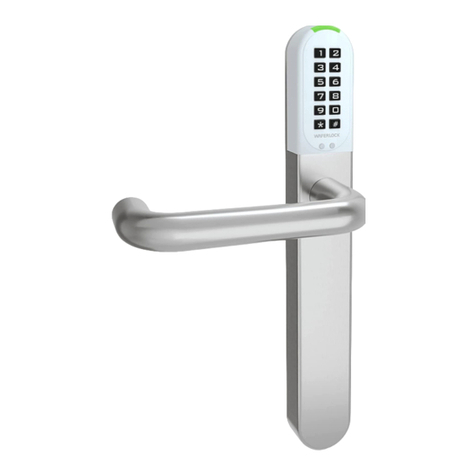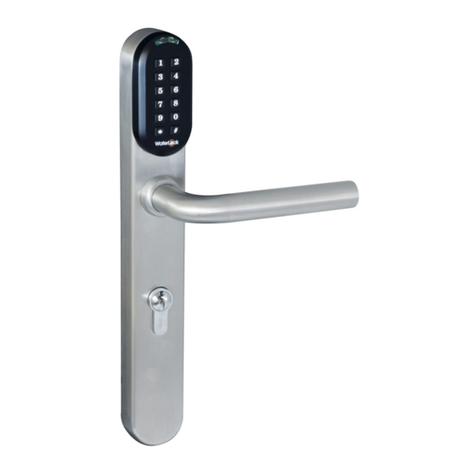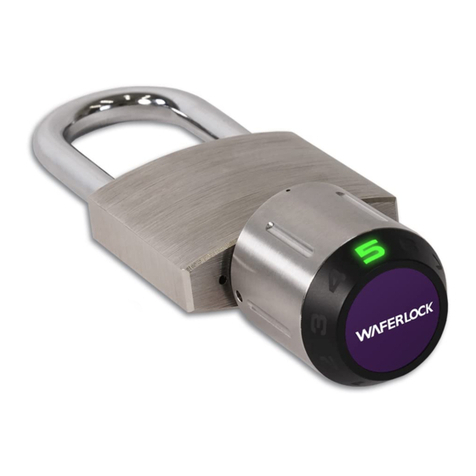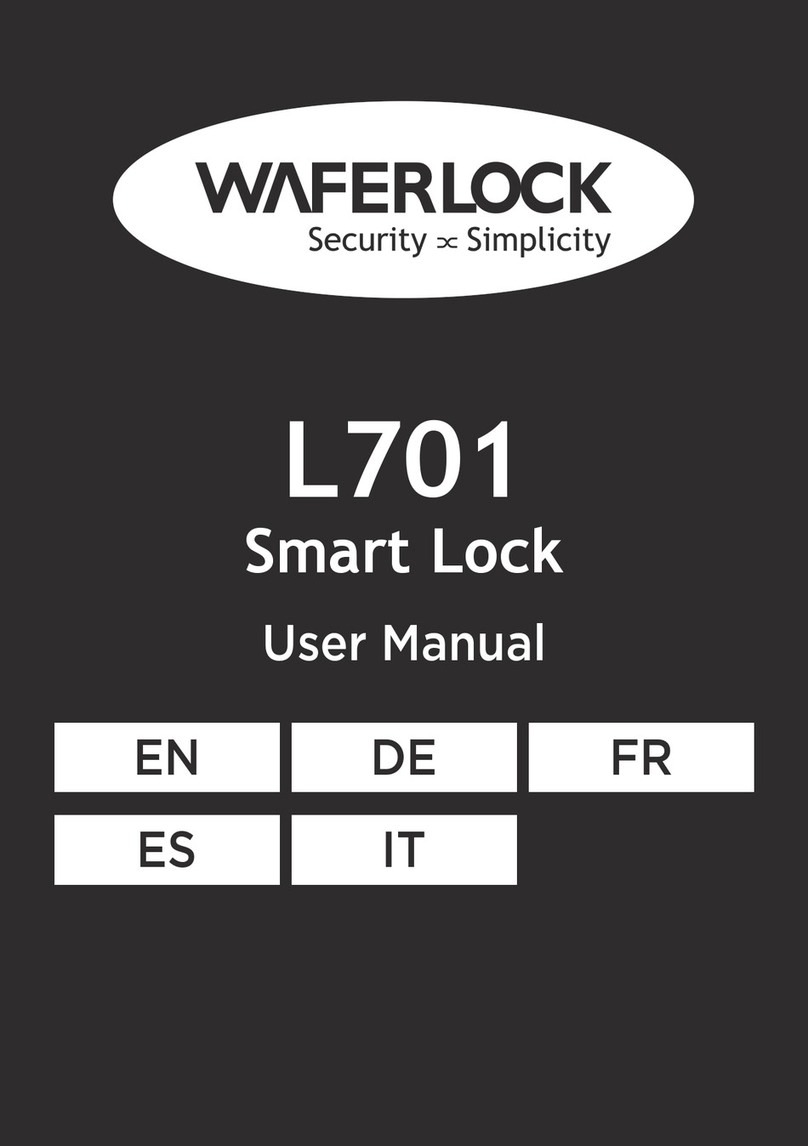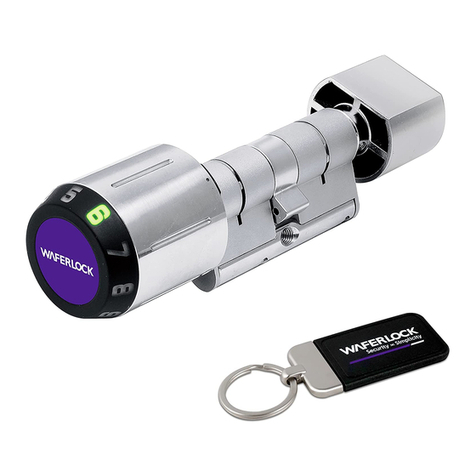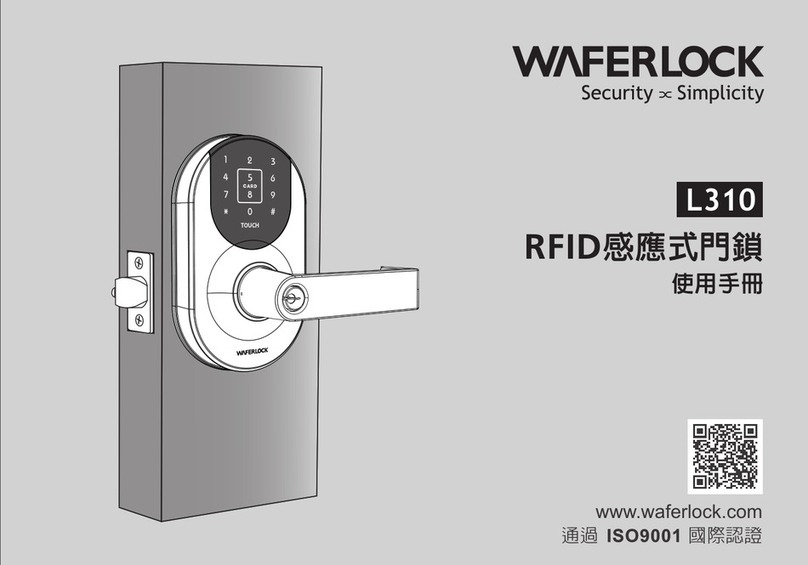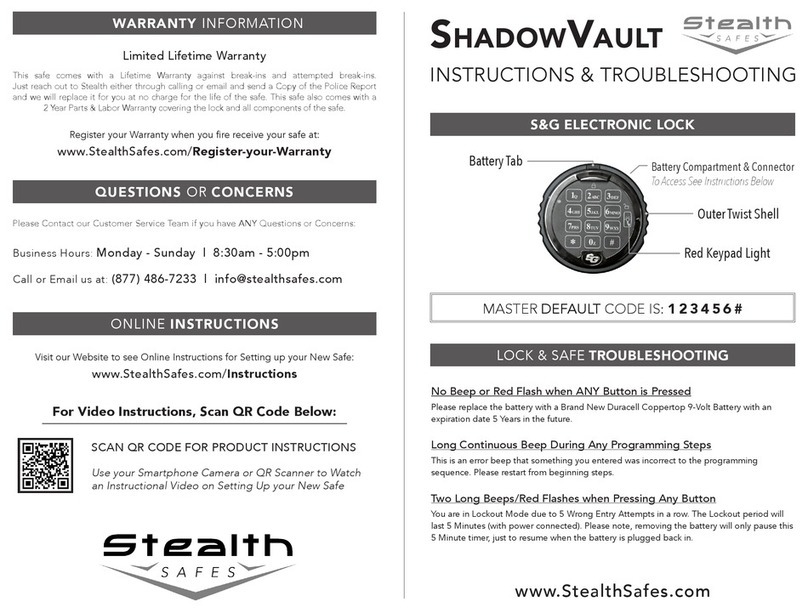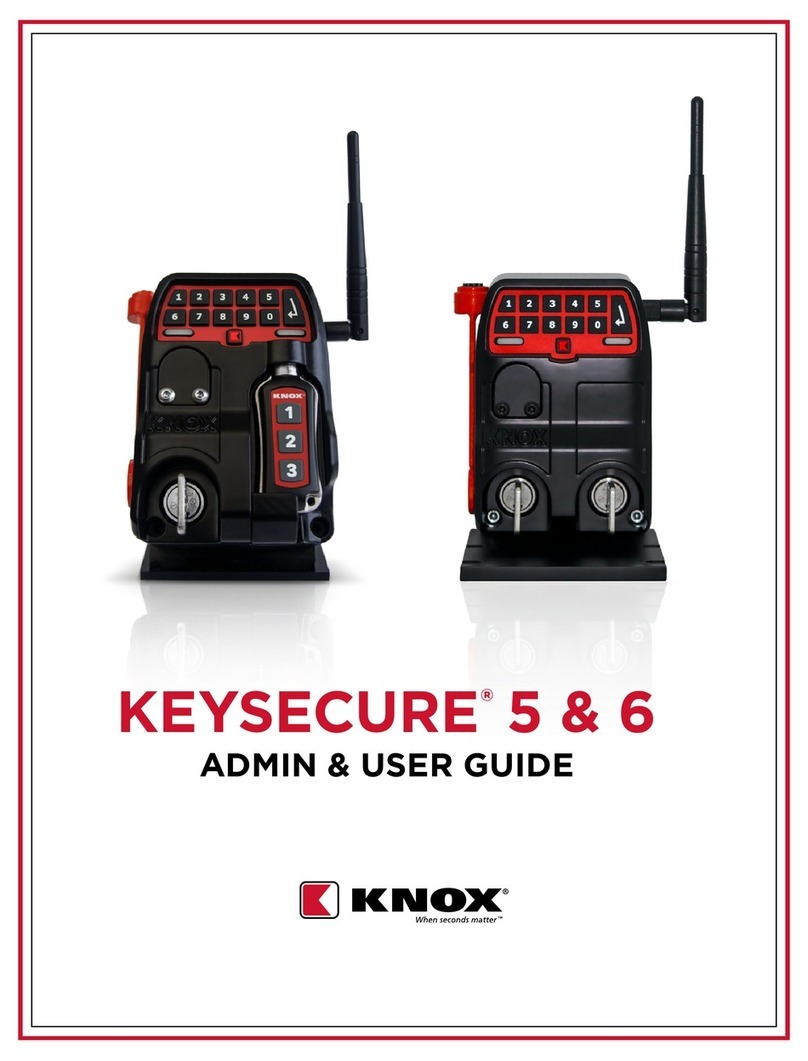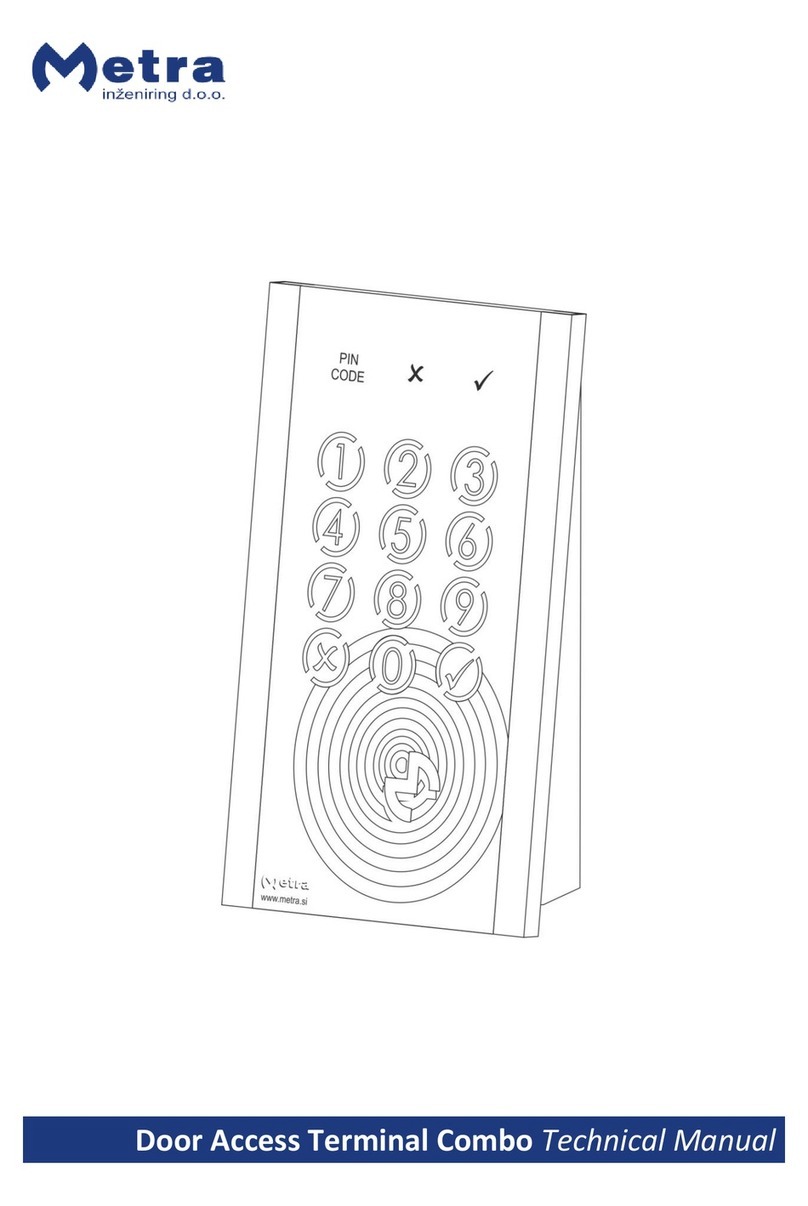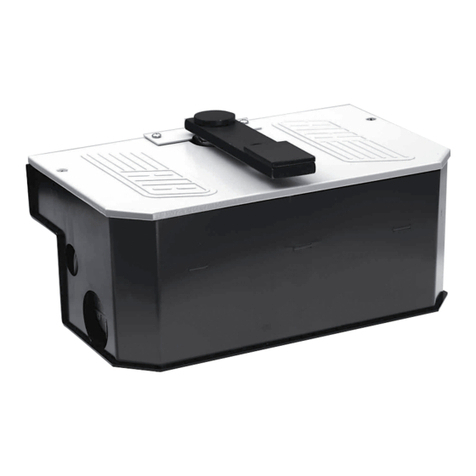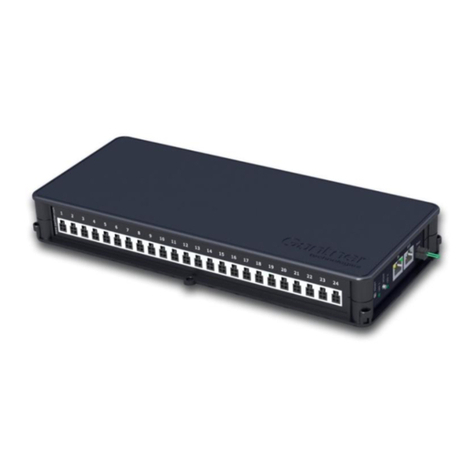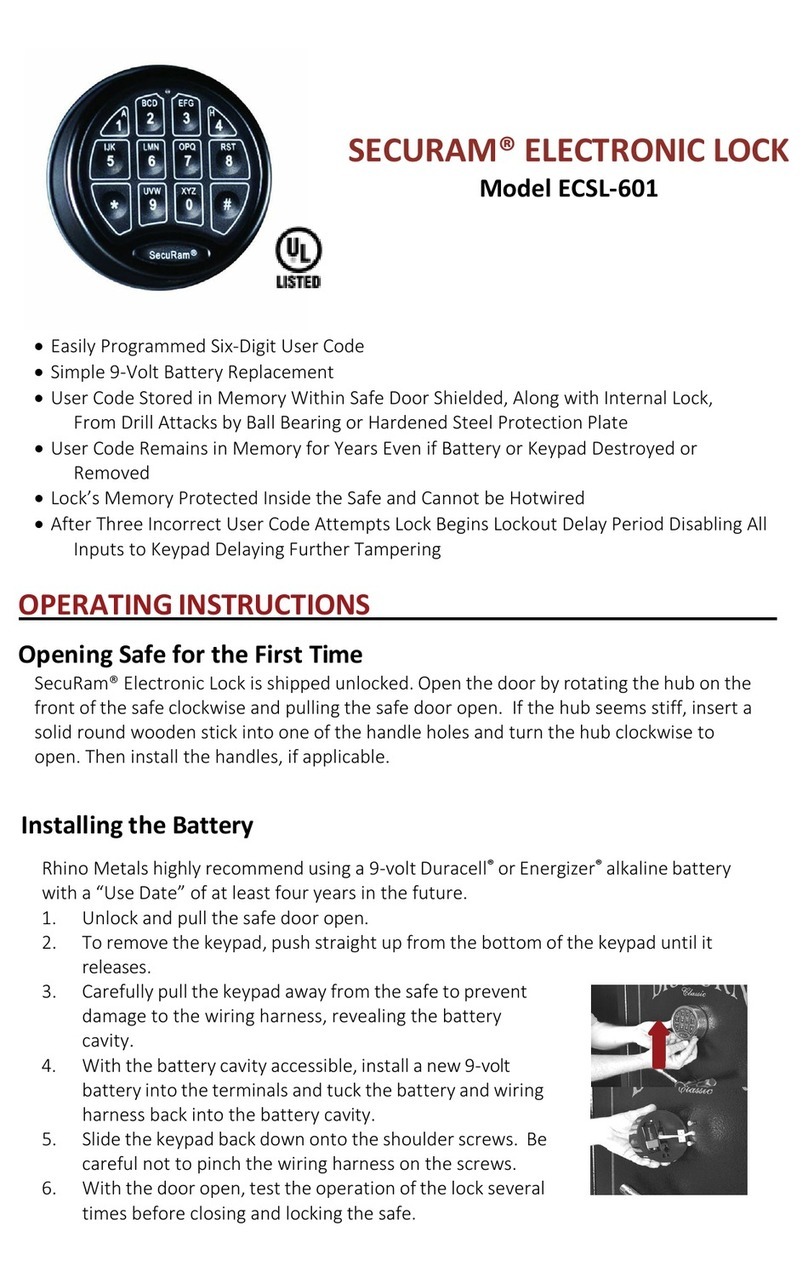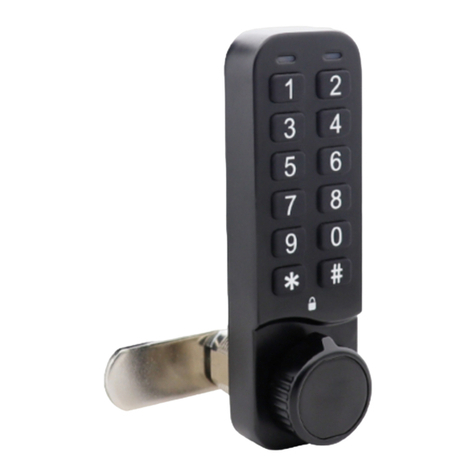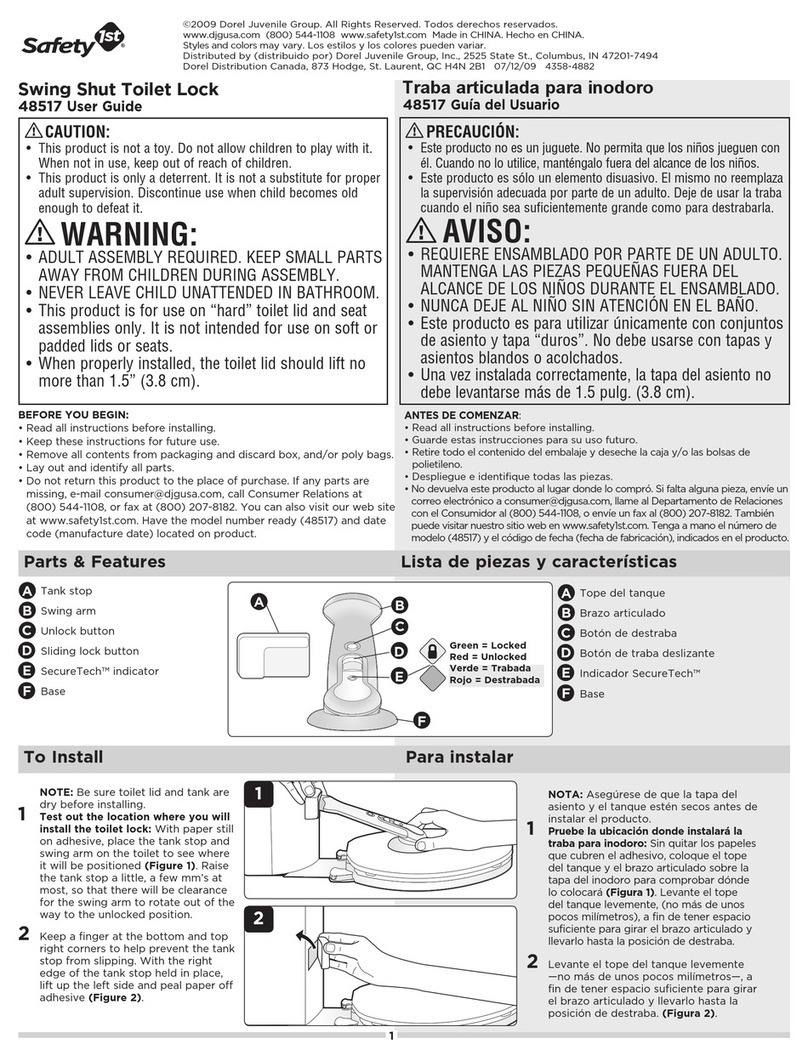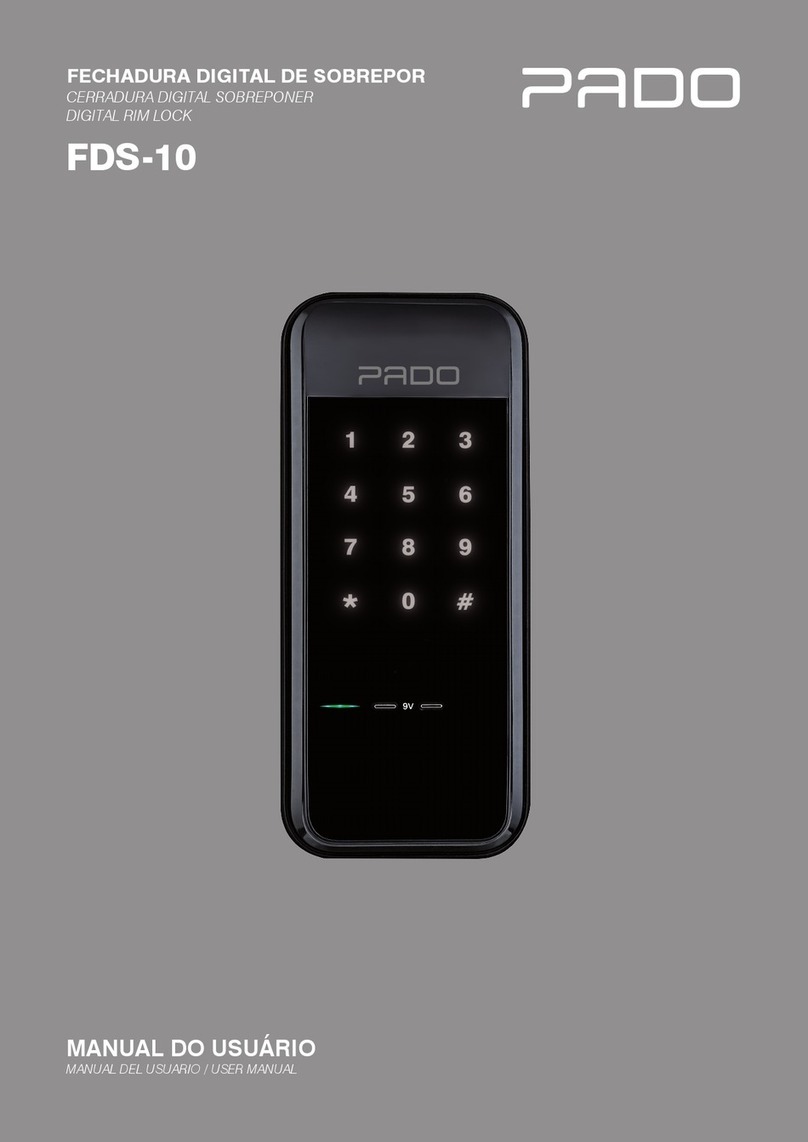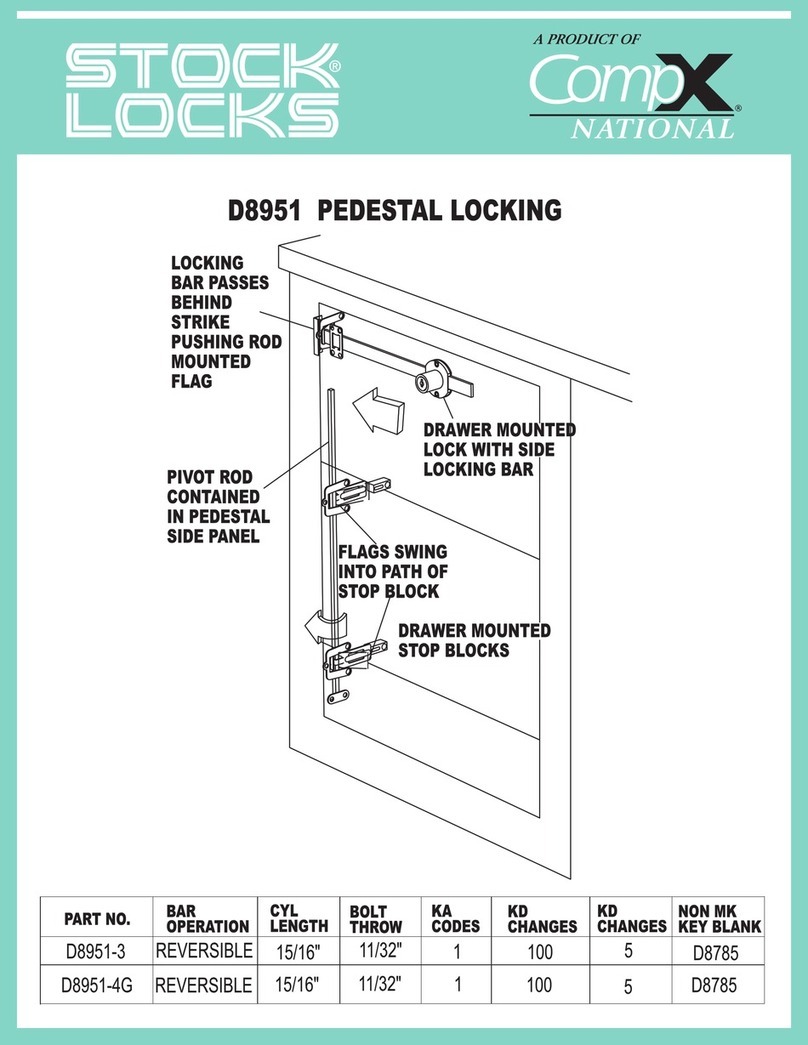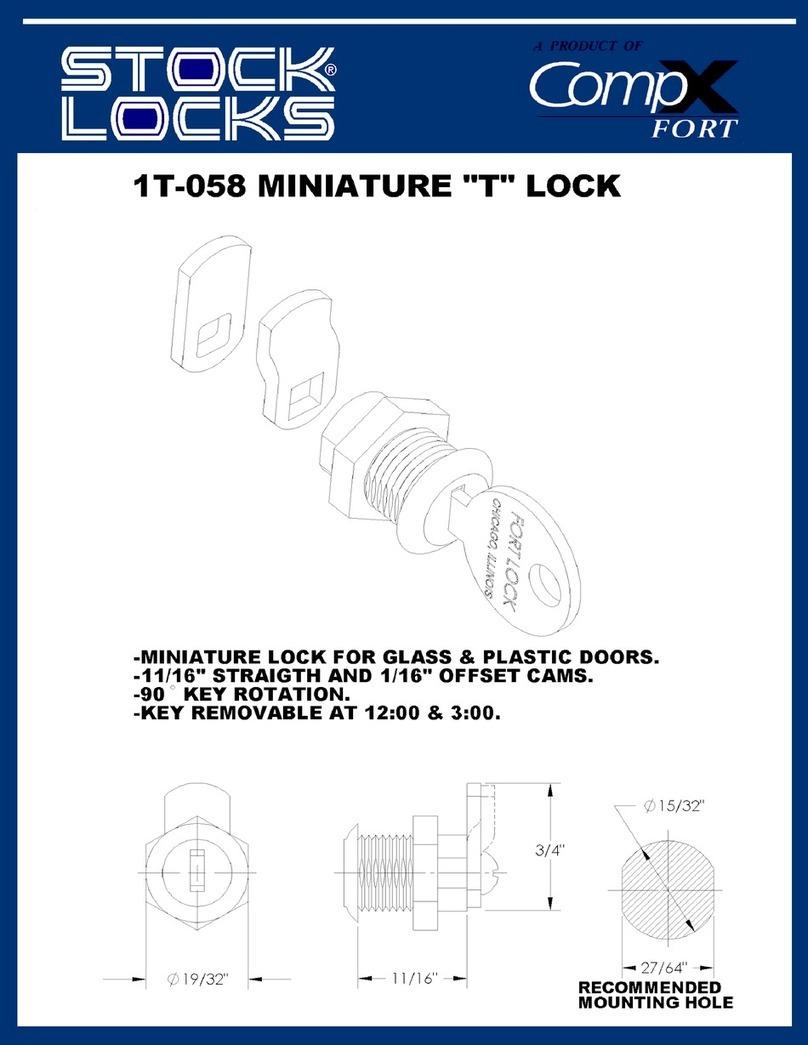1Front Reader
2Inside control unit
9Thumb turn set with 2 screws
L342 Parts List www.waferlock.com
3Electronic mortise 18 Fix Screws for Lip Plate
& Mortise Lock
24 Screw (with stick screw)
7Outside Lever 8inside Lever
5Lip Plate
6Dust-prove box
25 ANSI cylinder with keys
13 Spindle
23 Stick screw
16 Plate
10 Spring cage
26
Batteries (AAA)
22 Front reader slide cover screw
14 Lever spring
15 Outer lever ring
11 Mounting plate
12 Inside rose
version.01
4Side plate
17 Side plate screw
20 Mounting Screw (for control unit)
21 Mounting Screw (for plate)
19 Lever screw
Federal Communication Commission Interference Statement
This equipment has been tested and found to comply with the limits for a Class B digital device, pursuant to Part 15 of the FCC Rules. These limits are designed to provide reasonable
protection against harmful interference in a residential installation.
This equipment gen erates, uses and can radiate radio frequency energy and, if not installed and used in accordance with the instructions, may cause harmful interference to radio
communications. However, there is no guarantee that interference will not occur in a particular installation. If this equipment does cause harmful interference to radio or television
reception, which can be determined by turning the equipment off and on, the user is encouraged to try to correct the interference by one of the following measures:
. Reorient or relocate the receiving antenna.
. Increase the separation between the equipment and receiver.
. Connect the equipment into an outlet on a circuit different from that to which the receiver is connected.
. Consult the dealer or an experienced radio/TV technician for help.
FCC Caution: To assure continued compliance, any changes or modifications not expressly approved by the party responsible for compliance could void the user's authority to operate
this equipment. (Example - use only shielded interface cables when connecting to computer or peripheral devices).
This device complies with Part 15 of the FCC Rules. Operation is subject to the following two conditions:
(1) This device may not cause harmful interference, and (2) This device must accept any interference received, including interference that may cause undesired operation.
